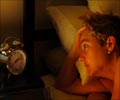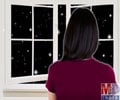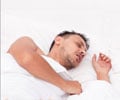Hypoglossal nerve stimulation (HGNS) produced marked dose-related increases in airflow in obstructive sleep apnea (OSA) patients without arousing them from sleep.

"With HGNS, airflow increased in all of our patients, and increased progressively with stimulus amplitude," according to Alan R. Schwartz, MD, medical director of the Sleep Center at Johns Hopkins Bayview Medical Center. "The increases in airflow we observed were of sufficient magnitude to eliminate inspiratory airflow limitation (IFL) in the majority of patients."
The findings were published online ahead of print publication in the American Thoracic Society's American Journal of Respiratory and Critical Care Medicine.
The study, which was supported by device manufacturer Apnex Medical, Inc., enrolled 30 middle-aged patients with moderate and severe obstructive sleep apnea who were implanted with a novel HGNS system. The pacemaker-like device monitors breathing patterns and is activated during sleep to stimulate the hypoglossal nerve, which controls muscles in the upper airway.
During the study, current was increased stepwise during non-REM sleep. Frequency and pulse width were fixed. At each current level, stimulation was applied on alternating breaths so that responses in inspiratory airflow could be compared to adjacent unstimulated breaths, and maximal inspiratory airflow (VImax) and IFL were measured.
HGNS produced linear increases in VImax with increasing current. Mean VImax increased significantly from 215±21ml/s off stimulation to 509±37mL/s on stimulation. VImax increased in all patients, and IFL was abolished entirely in 17 (57%). Normal or near-normal levels of flow were achieved in all 30 patients.
Advertisement
The study had a few limitations. Esophageal manometry was not used to monitor inspiratory effort, and flow response was not measured in all body positions and sleep stages. In addition, the effects of chronic use of HGNS therapy were not assessed.
Advertisement
Source-Eurekalert















